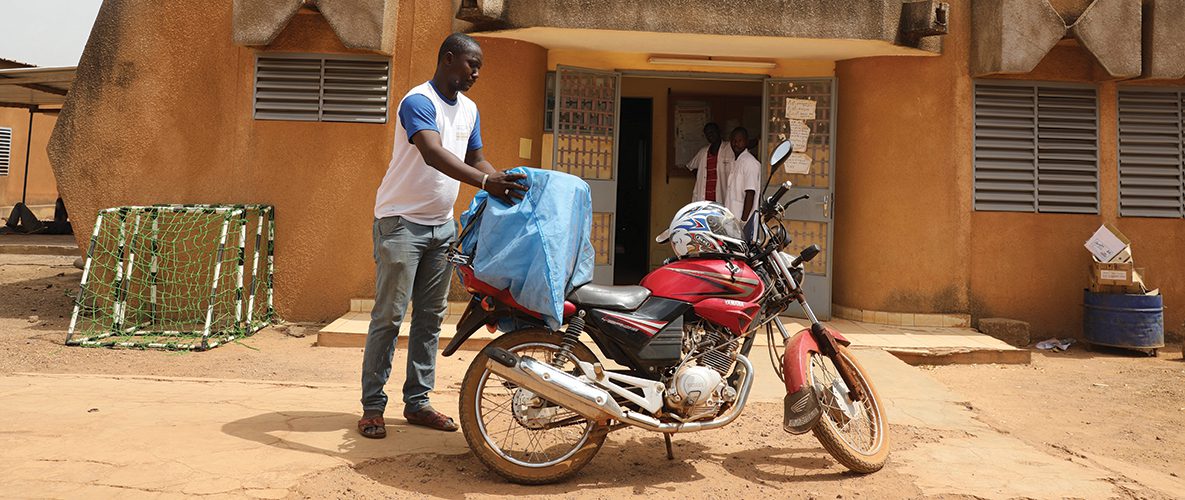CDC in Burkina Faso

The Centers for Disease Control and Prevention (CDC) first began collaborating with the Ministry of Health of Burkina Faso in 1991. The initial technical support for polio eradication expanded to include other vaccine preventable diseases such as measles and meningitis. With the launch of the Global Health Security Agenda, CDC established an office in Burkina Faso in 2016 focused on strengthening the country’s ability to prevent, detect, and respond to public health threats, and to strengthen the country's capacity in surveillance, laboratory systems, workforce development, and emergency management.

What CDC is Doing in Burkina Faso
CDC Impact in Burkina Faso
- 17 million doses of polio vaccine and 2.4 million doses of measles vaccine were given to children under five years of age.
- More than 12 million people have been vaccinated against meningitis.
- Public health workers from ten national and regional laboratories handling dangerous pathogens have been trained on enhanced biosafety practices.
- The CORUS (Public Health Emergency Operation Center) was officially inaugurated in 2018.
- Burkina Faso can now test for 10 priority pathogens (influenza, HIV, Mycobacterium tuberculosis, Plasmodium species, Salmonella Typhi, Vibrio cholerae, dengue, yellow fever, measles, N. meningitis).
CDC Staff in Burkina Faso
- 2 U.S. Assignees
- 3 Locally Employed
Burkina Faso at a Glance
- Population: 19,193,382
- Per capita income: $1,810
- Life expectancy at birth: F 61/M 60 years
- Infant mortality rate: 57/1,000 live births
Sources: World Bank 2018, Burkina Faso
Population Reference Bureau 2018, Burkina Faso
Burkina Faso Top 10 Causes of Death
- Malaria
- Lower respiratory infections
- Neonatal disorders
- Diarrheal diseases
- lschemic heart disease
- Tuberculosis
- Congenital defects
- Stroke
- Meningitis
- iNTS
Sources: GBD Compare 2018, Burkina Faso
Download Printable Overview Factsheet